Traveling to Alaska is becoming more and more popular. Whether you travel by cruise ship, fly in for a group tour, or just visit on your own, Alaska is definitely a place that should be on everyone’s list. Here’s some some common questions that a lot of people ask, with answers that (hopefully!) will help you plan your first (or your next!) trip to the 49th State!

(The flag of Alaska, showing the seven stars of the Big Dipper pointing to Polaris, the North Star. The Big Dipper is part of the the constellation Ursa Major, which symbolizes a bear, a common animal in Alaska. The flag shows how the “bear” can point someone to the North Star, and thus find “true north“.)
#1. What makes Alaska so special?
On my last visit to Alaska, my cruise ship was departing from Whittier, so I went to Anchorage early, to spend a few days in and around the city, to get to know more about Alaska. The thing that struck me during that week was that Alaska has it all! I know that sounds silly, but it’s true. Name pretty much anything you’re interested in, and Alaska has it: scenery like nowhere else in the world, great (and often unusual) food (“reindeer sausage” is the most popular street food here!), excellent museums, living native cultures, a fascinating history, wildlife all over the place, and some very cool events and traditions (you’ve heard of the Iditarod sled dog race, right?) But what takes me back every year to Alaska? THE PEOPLE. Simple as that. I’m sure there are unfriendly and rude Alaskans: I’ve just never met one (and believe me, I’ve tried!) The people of Alaska are some of the nicest, most welcoming people I’ve ever encountered. They seem so happy to have you in their state, and they are always willing to help you, to chat, to share their stories (or hear yours!) and to just have you be a part of their town. The people of Alaska make this state such a wonderful place to visit.
#2. Does everything cost more in Alaska?
This one really depends on where you’re from. Europeans will think Alaska is fairly inexpensive! For people from the rest of the US, your experience will vary. For example, if you live in the South, the Southwest, or the Midwest, you will find that most things are significantly more expensive than you’re used to. But for people that come from the Northwest, the Northeast, either coast, or Hawaii, prices will seem pretty normal to you. It IS true that some things are just more expensive (cars, for example) because everything has to be shipped in to Alaska. Trucking lines don’t include Alaska on their routes. (But honestly, how many people go to Alaska to buy a car?)
Remember too: some things are just better in Alaska. Do you like crab or salmon or cod? You’ll never find it fresher or better-tasting than you will here. And if you like berries, and products made from berries, you’ll find wild and domesticated berries here that are very different from what you find in other states. Raspberries, blueberries, blackberries, strawberries: yeah, they grow those here. But have you ever tried cloudberries or salmonberries or lingonberries or high bush cranberries or crowberries? You can sample all those here, and the jams they make from those berries (which you can buy pretty much everywhere) are amazing! Want something even MORE unusual? Try the spruce tip jelly! (No kidding: it’s great!)

#3. Isn’t it always cold in Alaska?
There’s an old joke that you’ll often hear from Alaskans: What are the four seasons in Alaska? Answer: Winter, June, July, and August. Honestly though, Alaska is like anywhere else: some places are warmer or drier or sunnier than others. Generally you’ll find that Alaska in the summer (because of the long hours of direct sunlight) will feel a lot warmer than the thermometer says it is. Here’s a table which I found on www.alaska.org, which I think you’ll find useful. It’s for the Inside Passage and Southeast areas of Alaska, which are the areas most visited by tourists.
| Month | Hi (F°) | Low (F°) | Daylight Hours | Sunset | Rainy Days | Clear Days |
|---|---|---|---|---|---|---|
May |
55 | 38 | 16.5 hours | 9:18 pm | 17 days | 8 days |
June |
60 | 45 | 18.1 hours | 10:04 pm | 15 days | 7 days |
July |
64 | 48 | 17.3 hours | 9:47 pm | 17 days | 8 days |
August |
62 | 47 | 15.2 hours | 8:39 pm | 18 days | 9 days |
September |
55 | 43 | 12.4 hours | 7:13 pm | 20 days | 6 days |
The key to travel in Alaska is to dress in layers. I generally just wear a T-shirt and shorts all day when I’m in Alaska in the summer, but it’s always a good idea to have a light poncho or hoodie with you for those occasional (but usually brief) rain showers you get in some areas. It’s also good to remember that rain is more frequent as the summer goes on.
#4. Are the cruise ports always crowded in the summer?
There’s no denying it: Alaskan ports can get VERY crowded when the ships hit town. In some of the smaller ports (like Skagway, for example) there can be more people visiting from ships than actually LIVE there! It can get frustrating trying to navigate your way through crowds of people all visiting the same town. But there are things you can do to avoid the crush and still have a great time.
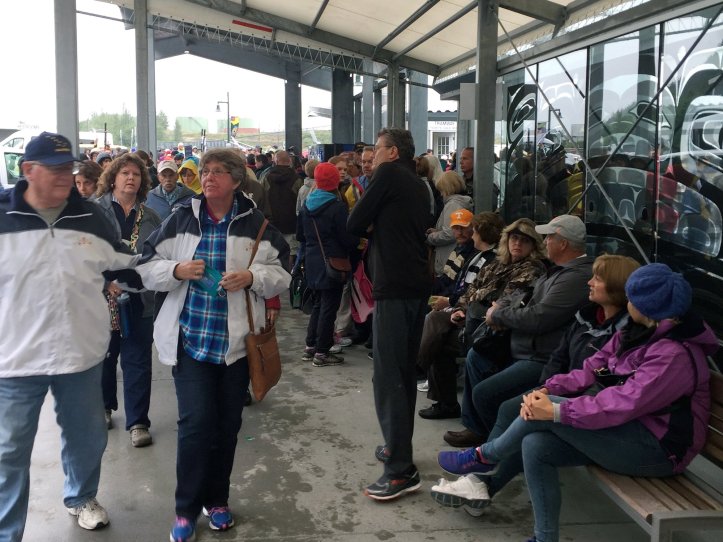
(Here’s a shot of crowds of cruise ship passengers waiting for their excursions in Juneau. Get out and get going early, and beat those crowds!)
The first thing you need to do before visiting any place is to DO YOUR HOMEWORK! Check out the popular tourist attractions, read up on things you might want to see and do, and then plan your day. That doesn’t mean you have to have a minute-by-minute schedule, but just have an idea of what you’d like to see, how long you’d probably be there, and how long it takes to get from one place to the other. Once you’ve done that, then I recommend that you decide which ones will be the most crowded, and VISIT THOSE FIRST! Cruise ship passengers generally fall into two categories: people that take the ship excursions, and those that do their own thing. If you can beat the excursions (and their large buses) you’re way ahead of the game. Here’ s an example from Skagway. One of the most popular places to visit in Skagway is the Red Onion Saloon. It’s VERY popular, as you can see from the picture below. So if this is something you absolutely have to visit, then I suggest you get there as soon as it opens (10 AM). Then you’ll be gone before it gets crowded (and I do mean CROWDED!)
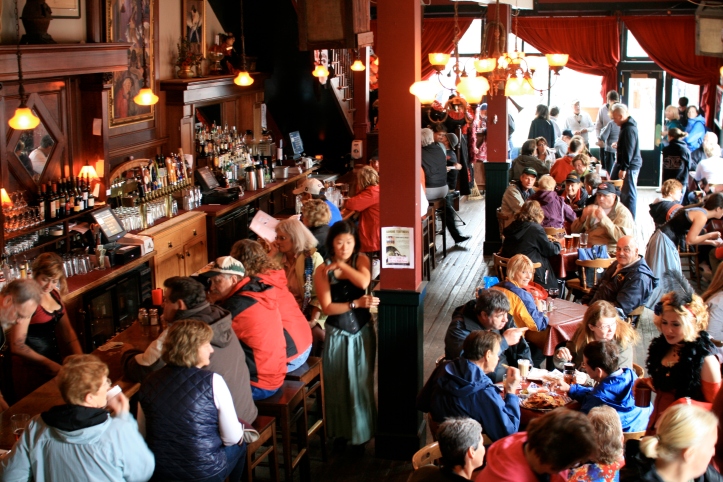
#5. Will I be able to see wildlife in Alaska?
To be honest, you almost have to try to NOT see wildlife here! Alaska is the least-densely populated state in the US (1.3/0.5 persons per square mile/kilometer) and much of the land area is wilderness, so there are lots of places for wild animals to exist. But even if you’re just on a cruise ship, you can see lots of wildlife (sometimes even from your ship!) On a recent 40-minute bus trip from Juneau‘s cruise port to the Mendenhall Glacier, our driver slowed down, pulled over, and said, “If you can get out of the bus quietly, you’ll see something pretty cool.” This is what we saw! And we were still on the outskirts of the city!
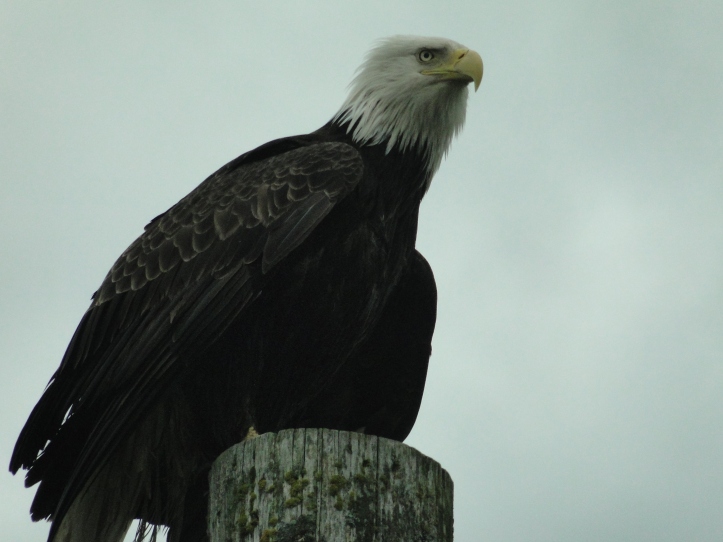
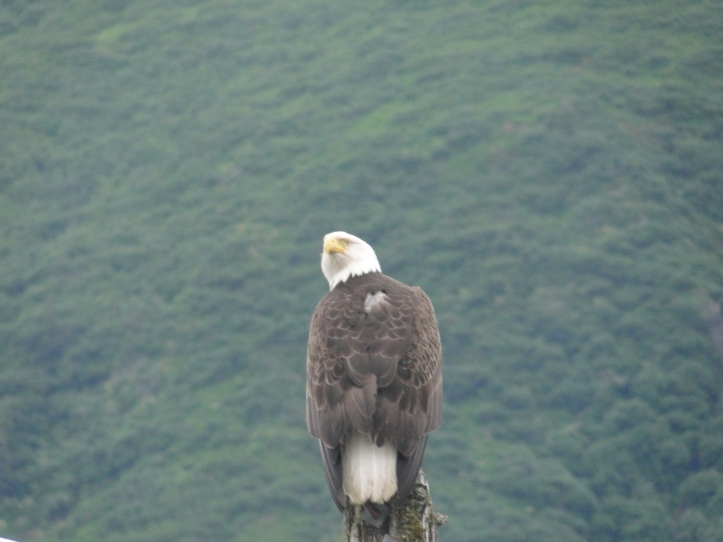
In case you’re wondering, yes, I took these pictures, and no, I don’t have any special zoom lenses or anything like that. The eagles were sitting on poles by the side of the road, and didn’t seem the least concerned by our presence. We got to within about 20 feet and then our driver (a Tlingit native) said we should probably not get any closer! What a great experience!
The most popular ship excursion in Alaska has to be the whale-watching tours. If you do your homework (there’s that phrase again!) in advance, you can easily find a great company to take you out to see whales, orcas, harbor seals, sea lions, porpoises, otters and sometimes (on the shore) black bears and other creatures. I recommend that you arrange the tour on your own: you’ll save a ton of money (often half of what you’d pay on the ship), you’ll be on a smaller ship (so no fighting the crowds at the rail when the whales surface) and you’ll have a much more personal experience. Any good company will show you whales, guaranteed! In fact, this is how you know if you’ve got a reputable company: if they promise a FULL REFUND if no whales are seen, you’ve got a winner. (Interestingly, most cruise ships offer only a partial refund if no whales are spotted on their tours.)
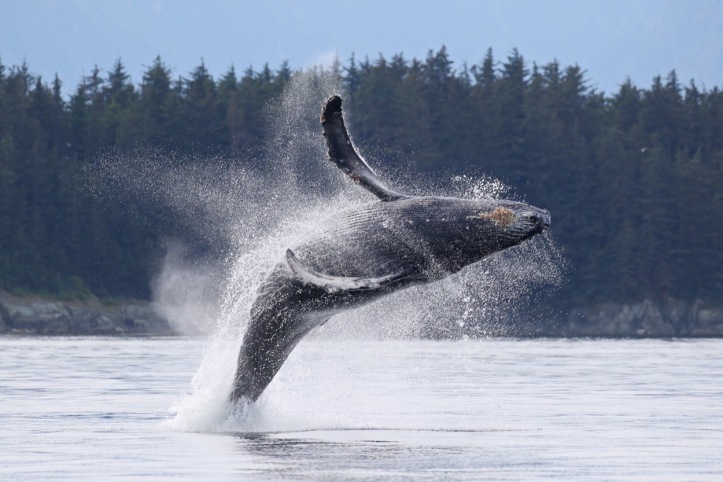
(I wish I were a good enough photographer to have taken this picture, but I wanted a great picture of a whale spotted on a recent tour, so I am using this one, which comes from my favorite company in Juneau, Juneau Tours and Whale Watch. I highly recommend you use them for your tour!)
That company hasn’t paid a refund in over 15 years: that’s how good they are at finding the wee beasties! As one of their guides put it, “We make sure you see whales. I have never led a tour that hasn’t seen whales. We know that’s why you came, so we make sure to go where we know the whales will be.”
Here’s a video of some of their highlights from the 2017 season.
#6. What is public transport like in Alaska?
For the do-it-yourself traveler, this is an important question. Alaska is a VERY big state. In fact, there only 18 countries in the world that are larger! Just to give you an idea, here’s a map of western Europe, with the outline of Alaska over the top.
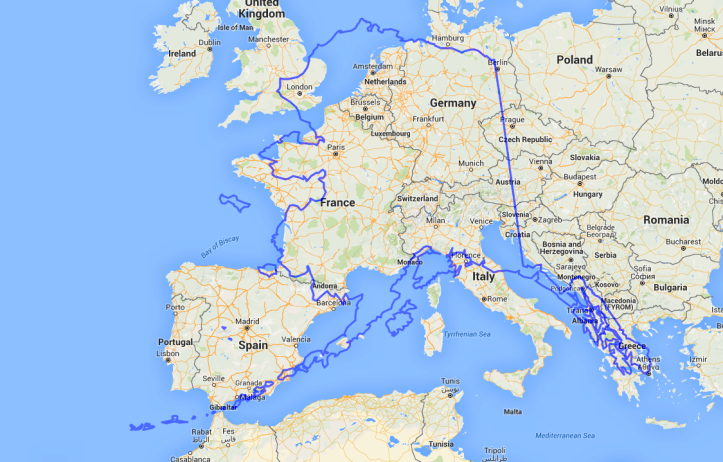
Obviously, if you’re going to travel around Alaska, you need to plan!
There is one rail line in Alaska, the Alaska Railroad. It runs from Seward through Anchorage, Denali National Park, Fairbanks, and ends up at North Pole, Alaska. There are shorter lines that connect Whittier and Palmer to the main line. It was orginally built to carry freight and resources, but does carry passengers. There is a daily service for passengers in the summer (mostly used by tourists), but during the off-season (September-May) there is only a weekly service, mostly for locals. Here are the routes for the train.
A. The Denali Star runs from Anchorage to Fairbanks. The trip takes about 12 hours one-way and runs once per day. There are stops in Talkeetna and Denali National Park. This route only operates between mid-May and mid-September. The trip is only 356 miles (573 kilometers) but since the train has to climb mountains along the way,, its average speed is around 40 mph (64 kph).

(The Denali Star at the Denali National Park station.)
B. The Aurora Winter Train only runs from mid-September to mid-May and only on weekends. It follows the same route as the Denali Star, but stops at a dozen more stops than the Denali Star .(since the train is mainly for the use of locals!) The northbound train leaves Anchorage on Saturday morning, while the southbound train leaves Fairbanks on Sunday morning.

(The Aurora: NOT for the faint-hearted!)
C. The Coastal Classic train goes south from Anchorage, following Turnagain Arm to the Kenai Peninsula, and ends in Seward. The route is 114 miles (183 km) long and takes about 4.5 hours, again because of the mountainous terrain the train has to get through. This is an amazingly scenic train ride!
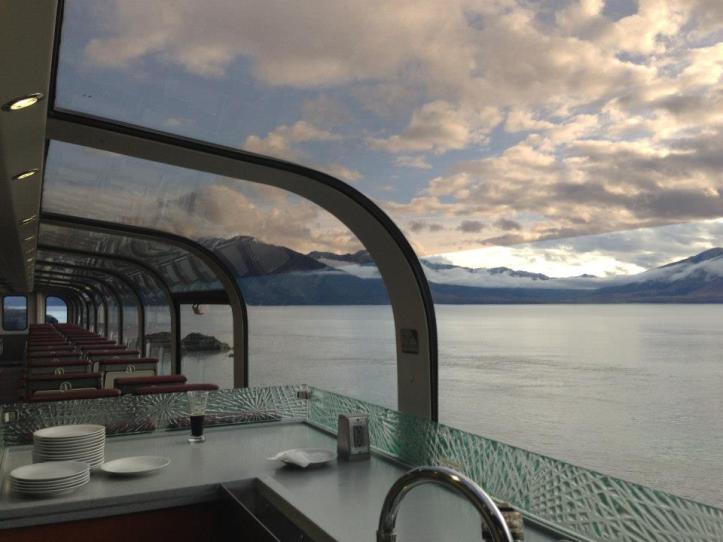
(The view from the inside of a dome-car on the Coastal Classic.
D. The Glacier Discovery has the shortest route of any Alaska Railroad service, a 2-hour trip that runs between Anchorage and Whittier. The train is mostly used by cruise-ship passengers, as the train stops at the cruise terminal of Whittier. The train leaves in the morning, has a short stop in Whittier, and then returns to Anchorage that evening. A highlight of the trip is the passage through the Anton Anderson Memorial Tunnel, also known as the Whittier Tunnel. It’s a single-lane tunnel, 2.6 miles (4 km) long, and both trains and motor vehicles use it. There are set times for going north or south through the tunnel, so you might have to wait for the next “opening”. It is the ONLY way to reach the town of Whittier by road! Here’s a picture of the entrance from the Whittier side.
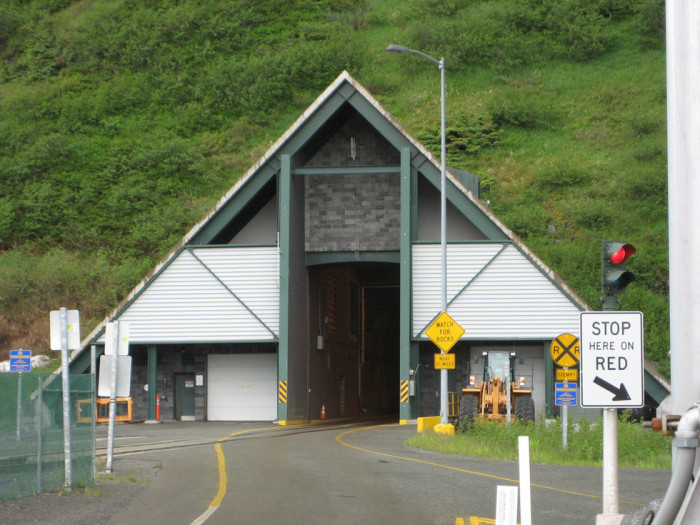
E. The final Alaska Railroad route is also the most interesting. Called Hurricane Turn, it provides rail service to people that live between Talkeetna and the Hurricane area of Alaska. There are no roads in this area, and the railroad is used by local residents to bring in food and supplies. It’s also one of the last “flag-stop” railroads in the US: people can board the train at any point along the route. They just have to wave a large white cloth and the train will stop for them!
From mid-May to mid-September, the Hurricane Turn operates Thursday-Monday, but from October to May, the train only operates on the first Thursday of each month.
Trains are not the only way to get around Alaska. One of the greatest systems in the state is the Alaska Marine Highway, which is made up of numerous ferries that can connect nearly all the areas of coastal Alaska. You can even start your journey in Bellingham WA! The system has regional hubs in Ketchikan, Juneau, Whittier and Homer. From these you can connect to dozens of cities, towns and villages across Alaska. Here are some typical travel times.
Bellingham (WA) to Ketchikan: 38 hours
Ketchikan to Juneau: 20 hours
Juneau to Yakutat: 17 hours
Yakutat to Whittier: 22 hours
Whittier to Chenega Bay: 4.5 hours
Chenega Bay to Kodiak: 14 hours
Kodiak to Homer: 9 hours
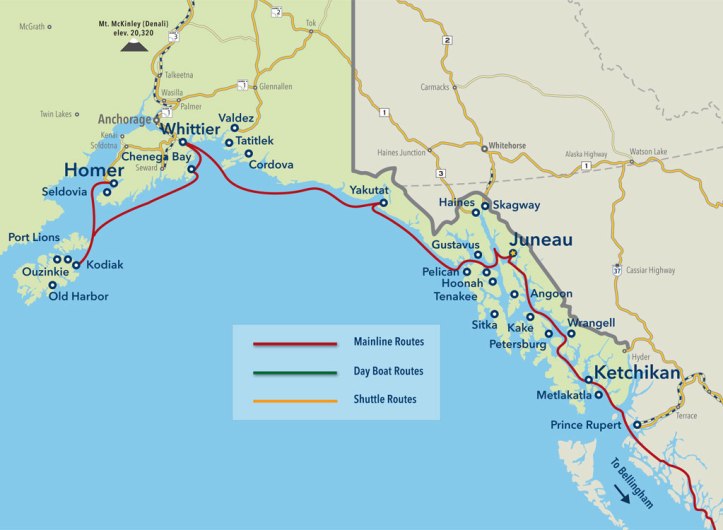
The Alaska Marine Highway is a great way (and sometimes the ONLY way!) to reach some of the more remote areas of Alaska’s coast.
As you can imagine, seaplanes are important for long-distance travel in Alaska. Lake Hood, located next to the Ted Stevens Airport in Anchorage, is the busiest seaplane “airport” in the world. Over 190 flights depart from Lake Hood every day.
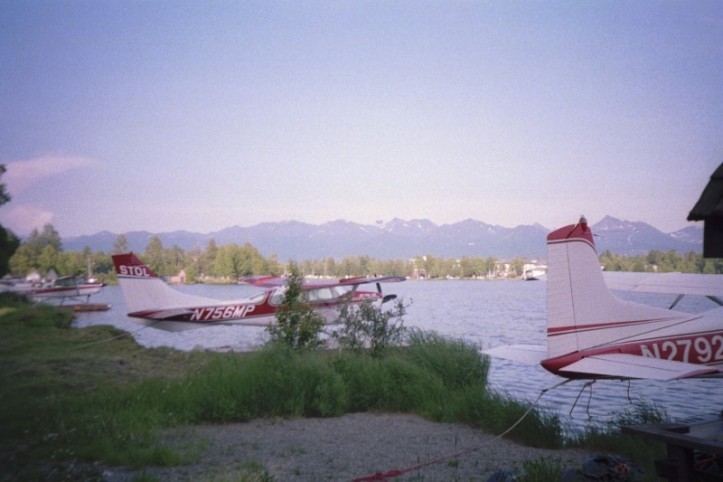
Lake Hood is open to the public, and you can charter a plane here for a flight into the “bush”!
There are also plenty of regularly-scheduled flights within Alaska, especially on Alaska Air. You can reach many remote towns from Anchorage or Fairbanks.
The larger Alaskan communities (Anchorage, Fairbanks, Juneau, and Ketchikan) have good bus lines, which can take visitors just about anywhere in the area they wish to go. Fares are very reasonable, and there is frequent service during the summer season.
#7. Is it possible to observe Native cultures in Alaska?
Of course! That is one of the real highlights of a trip to Alaska. You can learn about (and experience!) these cultures in many places. I’m going to highlight some of my favorite places to go.
At the top of the list I’ve got to put the Alaska Native Heritage Center in Anchorage. The Center covers 26 acres, and includes a full daily schedule of presentations, dances, demonstrations, and tours. There are even six authentic Native housing sites situated around a scenic lake. Here’s a video from the Center, introducing some of the things they offer. I HIGHLY recommend a visit here!
The Center is not far from downtown Anchorage. In fact, you can take a FREE shuttle bus from the Anchorage Museum (and back)!
Another worthwhile visit would be to the Eklutna Historical Park, which is about 30 minutes from Anchorage. This village dates from 1650, and is inhabited by Athabascans of the Dena’ina tribe. It was also home to many Russian Orthodox missionaries: you can visit St-Nicholas Orthodox Church, a log building that is the oldest structure in the Anchorage area. The cemetery is definitely interesting: the blending of Christianity and Native religious practices led to the use of “Spirit Houses” in the otherwise Christian cemetery. These spirit houses are colorful little buildings that are built over the graves of the deceased. The village also has a Heritage House with interesting displays. You can also book tours here that will take you further into the history and culture of the Athabascans.
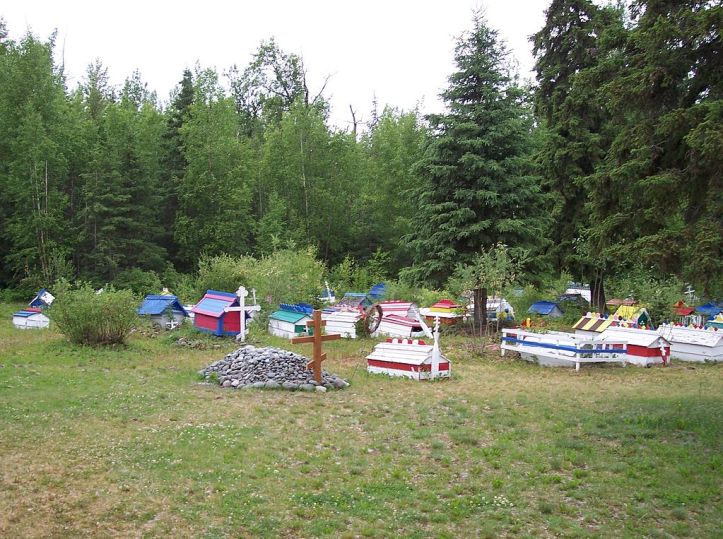
(Some of the spirit houses in Eklutna. As you can see, some have Orthodox crosses, while others do not!)
If you get down to Wrangell, in the Inside Passage (in southeast Alaska), you can immerse yourself in the Tlingit culture. Start with a visit to the Chief Shakes Tribal House. Then you should head for Petroglyph Beach State Historic Park, located about a mile from the ferry terminal. There are many petroglyphs to see here, carved by ancient Tlingit artists. Finally, make sure you visit the Kiksadi Totem Park, which is right in downtown Wrangell.
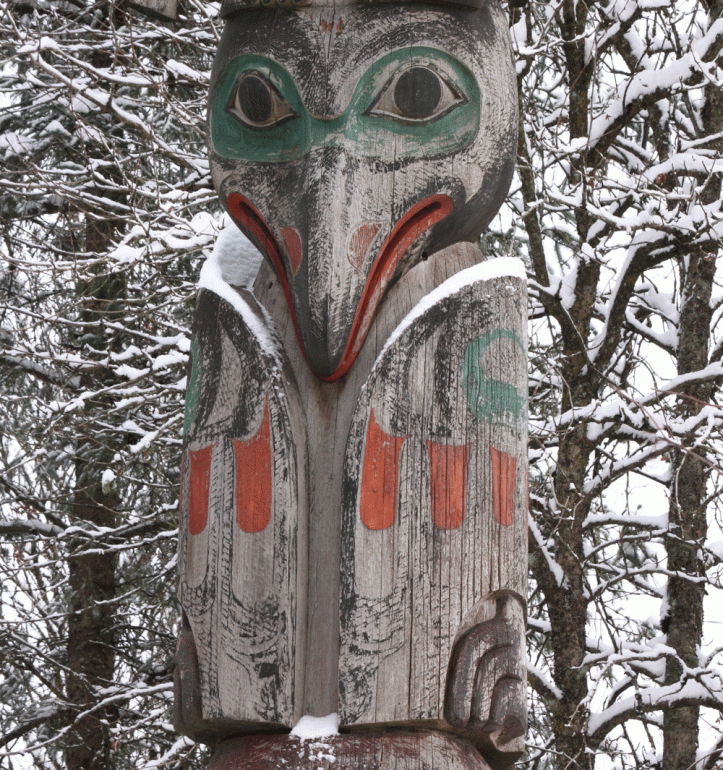
(This is the Raven totem at Kiksadi Park.)
Visitors to Ketchikan have several excellent options for learning about Native culture in Alaska. Your first stop should be Totem Bight State Historical Park. This, in my opinion, has the one of the finest collection of totem poles in the world. There are 14 poles here, of both Tlingit and Haida design. You can pick up a brochure at the entrance (free, like the admission!) that will show where to find all the poles. There is also a lot of historical and cultural information, in the brochure and on the numerous signs around the park.
There is also a clan house that you can visit here. Totem Bight is a very special place: don’t miss it! Here’s a picture of the clan house and one of the totem poles.
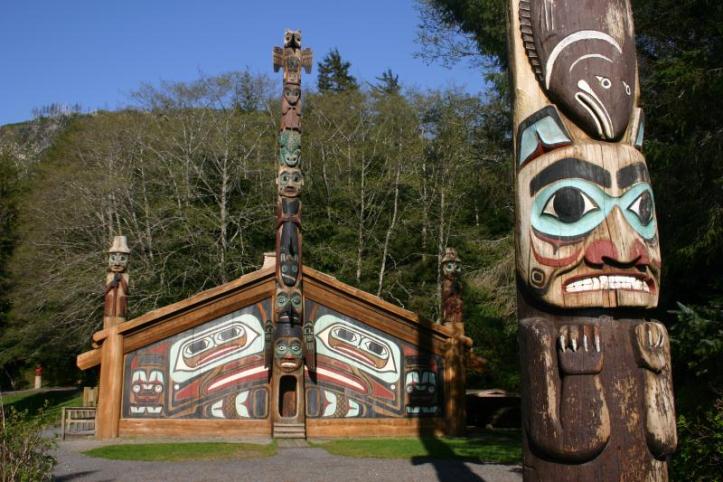
Right next door to Totem Bight is a privately-owned collection of totem poles that you can visit: Potlatch Park. If possible, Potlatch is even BETTER than Totem Bight! In addition to some amazing totem poles, Potlatch has a large Clan House, along with several smaller tribal houses nearby. Each tribal house has beautiful wall carvings both inside and out. You will not want to miss a visit to the Carving Shed to see old totem poles being restored and new ones created. It’s worth it for the heavenly smell of cedar alone!
To get to Totem Bight and Potlach, just take the local city bus (Silver Line NORTH) right across from the cruise terminal. It costs $1 each way, and drops you right off at the entrance to Totem Bight. The bus gets very crowded, so do this early!
The third thing you need to do in Ketchikan, if you’re interested in Native culture and history, is to visit the Totem Heritage Center. I will let the Center’s official website describe what it does:
The Totem Heritage Center preserves and perpetuates the living artistic traditions of the Tlingit, Haida and Tsimshian peoples that gave rise to the original totem poles on display and provides the opportunity to discover, learn and practice Native arts to inspire cultural understanding. Our knowledgeable staff and interpretive panels help visitors gain a historical context with which to approach contemporary totem poles and the cultural traditions present in our community.
The Center is located at 601 Deermount Street, which is about a 15-minute walk from the cruise terminal. However, from May to September there is a free Downtown Shuttle Bus that operates daily on a 20-minute loop serving all of the downtown area, cruise ship berths and several attractions including the Totem Heritage Center. Look for the bus that says “Downtown Shuttle”.
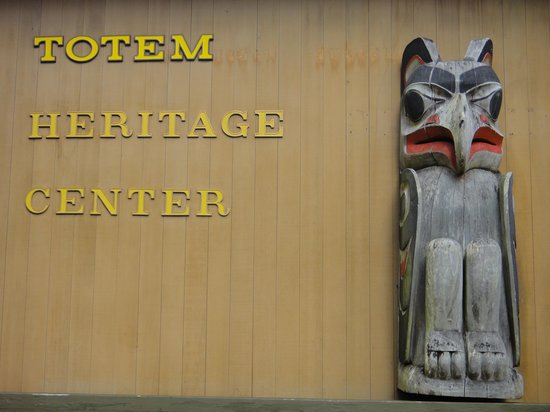
I generally don’t like to be negative in my posts, but I do have one place I highly recommend you to AVOID in Ketchikan: the Saxman Native Village. This place has some nice totem poles, and a lot of interesting displays and demonstrations. The thing that I do NOT like about Saxman, though, is that the place seems to be one big tourist trap. It starts even before you get to the “village.” We took the city bus out to Saxman from the cruise terminal, and we were let out right across from the village. We stopped, on the city sidewalk, to take some pictures of the totem poles and the clan house. Before we could do so, however, we were approached by several Native men, who informed us that we had to pay a $5 “photography fee” to take pictures. We thought this was odd, since (a) we were on a public street and (b) we weren’t given a receipt or any “photography permit”. We paid it, but little did we know that the scamming had only just begun. It turned out that there was an entrance fee for EVERYTHING at Saxman. Want to visit the clan house? Want to see a Native dance presentation? Want to hear Native singing? Want to watch a Native wood-carver at work? There was a fee for each and every one of those things! In fact, the only thing that DIDN’T have a fee was the gift shop! Trust me: you will see more (and better) examples of everything you would pay to see at Saxman if you go to the three places I mentioned above, and the only thing you’ll pay is for the bus! AVOID Saxman Native Village.
#8. What can I buy that is uniquely Alaskan? And where are the best places to shop for it?
Well, that’s actually two questions at once, but they do go together!
One of the problems with the modern world is that, once a product hits the market anywhere, other countries (especially China) copy it, mass-produce it (usually at low quality), flood the world with it, and sell it to people that think they’re buying something unique. The same is true for Alaskan goods. Even in some of the better shops around the state, you’ll find items that you think are “Alaskan” but are actually just Chinese knock-offs.
So how can you know that the item that you bring home as a “remembrance” of a wonderful trip to Alaska is actually made there? Fortunately, the State of Alaska wants you to be sure too! The State’s Division of Economic Development runs a very stringent program called “Made in Alaska.” Producers must apply for a permit, and meet strict guidelines, to be allowed to use the “Made in Alaska” logo.

That second logo is another one you should look for. It can only be displayed on things that were actually made by a Native Alaskan!
The US Federal Trade Commission has an excellent web page called “Buying Native Alaska Art” that has a lot of really good information on the kinds of Native handicrafts you can find in Alaska, and what to look for as you shop. Here’s the link:
https://www.consumer.ftc.gov/articles/0177-buying-alaska-native-art
OK, so what things are made in Alaska that you can’t find anywhere else? Let’s look at a few of those products, and talk about the best places to buy them.
Qiviut (pronounced “kiv-ee-ute”)
In Alaska you can see musk ox (a relative of the woolly mammoth) in the wild (rarely), on farms, and at wildlife refuges. The musk ox is interesting because it has a two-layered coat: a long, coarse outer wool coat and a short, soft undercoat. Both coats are shed in the spring. The Inuktitut and Inupiaq people have a name for the soft undercoat: they call it qiviut and they gather it from the animals themselves, or wherever the wool has been shed. For me, the ultimate Alaskan product is an article of clothing made from qiviut. Why qiviut? Here’s why! It’s finer than cashmere, eight times warmer than wool, and is one of the lightest fibers in nature. It’s also hand-washable, far less scratchy than wool, more durable (an item made from qiviut can last 20 years), and it doesn’t shrink at any water temperature.
THE place to shop for qiviut products is the Oomingmak Musk Ox Producers’ Co-operative store in Anchorage. This co-operative is a group of over 200 Native women, living in remote villages (mostly on the Pacific and Arctic coasts) that knit qiviut fibers into scarves, hats and other products. The patterns are all traditional ones, and each knitter uses the pattern native to her area. Check out their video!
The products here are expensive. If you are a knitter, and want to make your own qiviut creation, look around for qiviut yarn in craft stores. You can order it online from The Musk Ox Farm, or even visit the farm and buy it there! The farm is located in Palmer, which is about 45 miles north of Anchorage, and well worth a visit! (It’s the place featured in the Oomingmak video.) Here’s the farm’s website URL:
Ulu knives
An ulu is an all-purpose knife that has traditionally been used by Inuit, Yupik and Aleut women. And when I say “all-purpose” that is exactly what an ulu is! Native women used them for skinning and cleaning animals, cutting a child’s hair, cutting food, as a weapon, and even for trimming blocks of snow and ice to build an igloo!
Nowadays most ulu knives are mass-produced in Asia, so be careful when buying one. They come in many styles, sizes and materials. A traditional ulu handle was made with caribou antler, musk ox horn or walrus ivory, and the blade was made with slate. Today, the handle of a good ulu is still made with caribou antler or other natural material, but the blade is usually made of steel. The Natives get the steel by purchasing a saw and cutting the blade to the correct shape.
You’ll see ulu knives for sale everywhere in Alaska. But don’t forget:

My favorite place for ulus (and lots of other things too!) is the Fish Creek Company store on Creek Street in Ketchikan. They stock hand-made ulus from makers all across the state, like this nice one here (it’s the one I own!):

Alaska Food!
There are so many food items you can bring home from Alaska (or have shipped home for you!) Salmon and king crab are very popular choices. If you go on a fishing trip in Alaska, you can even find packing plants at the dock that will process your catch, vacuum pack it, flash-freeze it, and ship it by FedEx to your home! For me, though, Alaska is found in the woods: the berries and the other things that grow wild. Try some spruce tip jelly or fireweed honey: mmmmmm! As I mentioned earlier in this post, Alaska has many kinds of wild berries that can be made into jams and jellies. I really like lingonberry jam and cloudberry jam.
You can find jams and jellies in many shops throughout the state. Two of my favorite shops (both also have online stores) are Alaska Wild Berry Products, on Juneau Street in Anchorage; and Berry Delightful, in Talkeetna (not far from Denali).
#9. So when should I go?
Summer is obviously the “main” tourist season, but there are plenty of things to do in Alaska throughout the year. I’ve mentioned a lot of them already in this post, but what I’m going to do now is list one thing to see and do during each month of the year!
January Christmas in Ice, North Pole
Yes, there is a town in Alaska called “North Pole!” This event starts in November and ends in early January.
Christmas in Ice, the 6-week winter ice park located next to Santa Claus House, 101 St. Nicholas Drive in North Pole, Alaska features Christmas-themed ice art competition pieces, ice slides and a maze, twirlers, indoor kids’ crafts, and educational ice sculpture demonstrations, adding color and light to our Interior Alaska winter. The kid’s parks is AWESOME.
(How cool is this? It’s a really long ice slide at Christmas in Ice!)
http://www.christmasinice.org/
February Iceworm Festival, Cordova
The first full weekend of every February, Cordova rolls out the red carpet and welcomes guests from all over the world for the annual Cordova Iceworm Festival. In 1961, a few Cordovans created the Iceworm Festival as a way to break up the winter blues. Since then, the event has turned into one of the most successful festivals in Alaska. Three days of fun-filled events showcase Cordova’s talents, hospitality and sense of humor. The Iceworm Variety Show features local performers and is the stage for the Miss Iceworm coronation. Groups of locals race down the docks, jump into survival gear and dive into the icy harbor waters in the annual Survival Suit Race. The parade is a procession of excitement as the Iceworm makes its yearly appearance.

(The Iceworm makes it grand entrance in the parade!)
http://www.cordovachamber.com/events/cordova-iceworm-festival
March Winter King Salmon Tournament, Homer
The Homer Winter King Salmon Tournament is the premier fishing tournament of Alaska. Every March anglers take to the waters of Kachemak Bay in search of King Salmon. The one-day tournament awards tens of thousands of dollars in prize money to the largest kings caught. After the fishing lines are pulled from the water join the festivities at the weigh-in located at Coal Point on the Homer Spit. Join us for music, food, beer, and big fish!
https://www.homeralaska.org/2018-winter-king-salmon-tournament.html
April Arctic Man, Summit Lake
This is WITHOUT DOUBT the strangest thing I’ve ever seen. Nothing else is remotely close.
The concept for the racing is pretty simple. A skier or snowboarder starts at the top of mountain number one, descends into a canyon where they grab a tow rope fixed to the back of their teammates’ snowmobile. From there, they get pulled up mountain number two and race across a plateau, reaching speeds up to 90 mph. The skier then sling shots himself off the plateau and down the final descent to the finish line. Fastest time wins. See for yourself as teammates Levi Lavallee and Daron Rahlves explain in the video below.
May Kenai Peninsula Birding Festival, Soldotna/Kenai/Kasilof/Sterling
Where the river ends and the birding begins!
The Kenai Peninsula boasts pristine beaches, beautiful state parks, a fantastic wildlife refuge and, best of all, thousands of birds. This four-day festival is designed to showcase and celebrate peninsula birds for all ages and abilities. Suitable for the beginner as well as the advanced birder, the festival includes informative sessions, social gatherings and birding field excursions.
Our field excursions offer fantastic birding opportunities without going too far. We have a host of experts ready to take your birding skills to another level. Young birders can get involved through a variety of activities from creative artistic endeavors to hands-on field trips.
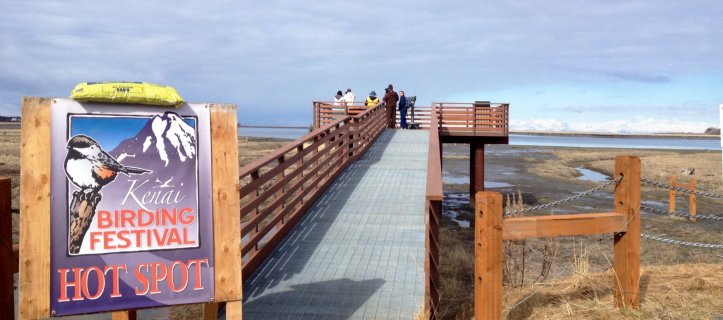
http://www.kenaipeninsula.org/kenai-peninsula-birding-festival
June Midnight Sun Baseball Game, Fairbanks
On the longest day of each year (with a full 24 hours of daylight), the people of Fairbanks celebrate the coming of summer with the playing of this traditional game – which continues through the midnight hour and never uses artificial lights. With Fairbanks a mere 150 miles south of the Arctic Circle, the sun is just beginning to set in the North as the game of baseball gets under way and, at its conclusion some three hours later, the sun begins to rise again – also in the North. Where else can you experience that?
The “high noon at midnight” baseball game originated in Fairbanks in 1906. Every year since then it has been the ritual to play the game on the summer solstice. Never once has artificial lighting been used for this unique event.
Baseball America called it one of the “12 Must See Events for the Baseball Fan”. ESPN Magazine selected the Midnight Sun Game as the Number One Destination for its “2010 Baseball Road Trip”.
http://goldpanners.pointstreaksites.com/view/goldpanners/midnight-sun-game-56-years-at-growden
July Poor Man’s Beach Gold Panning Contest, Nome
Once miners began extracting gold from Nome’s beaches, the race was on. Anyone could work the sand of Nome’s “poor man’s paradise.” All you needed were some tools, some luck, and speed. Good old-fashioned skill also helped. Those skills are celebrated today in Nome’s “Poor Man’s Beach Gold Panning Contest,” held in late July near the Giant Gold Pan in Anvil City Square.
Each contestant receives “pay dirt” with an equal amount of gold, and the one to pan it fastest is the winner. Lots of fun, whether you’re swishing a gold pan, or cheering on participants.
http://www.alaska.org/detail/poor-mans-beach-gold-panning-contest
August Blueberry Arts and Gigglefeet Dance Festivals, Ketchikan
C’mon, admit it: those names made you smile! The Blueberry Arts Festival is always the first Saturday in August, and features lots of fun activities: several Fun Runs and Walks and Kids’ Runs, a Pet and Doll Parade, a Best Blueberry Dish contest (with entries eaten after the awards ceremony!), Blueberry Pie Eating Contest, Art Exhibit, Beard and Mustache Contest, Blueberry Boat Race, and a Slug Race for kids 12 and under. The Gigglefeet Dance Festival is always held in conjunction with the Blueberry Festival, and is held on the Friday and Sunday of Blueberry Festival weekend. It is a community celebration of dance.
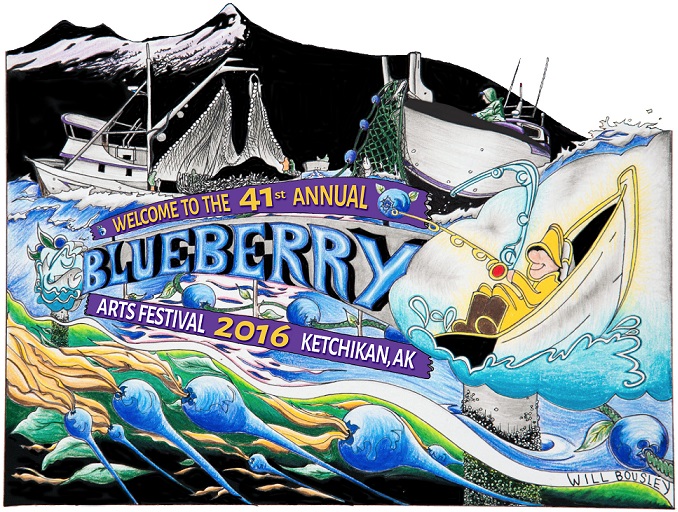
http://ketchikanarts.org/events-programs/blueberry-arts-festival/blueberry-arts-festival
September Tongass Rainforest Festival, Petersburg
The festival’s theme is: “Bringing people closer to the natural world through education, exploration, and the arts.” It is sponsored by the US Forest Service and various local organizations in the Tongass National Forest. It includes a half-marathon rainforest run, several organized hikes and nature walks, numerous lectures and presentations, and lots of kids’ activities (things like “Rainforest Bugs and Their Homes“).
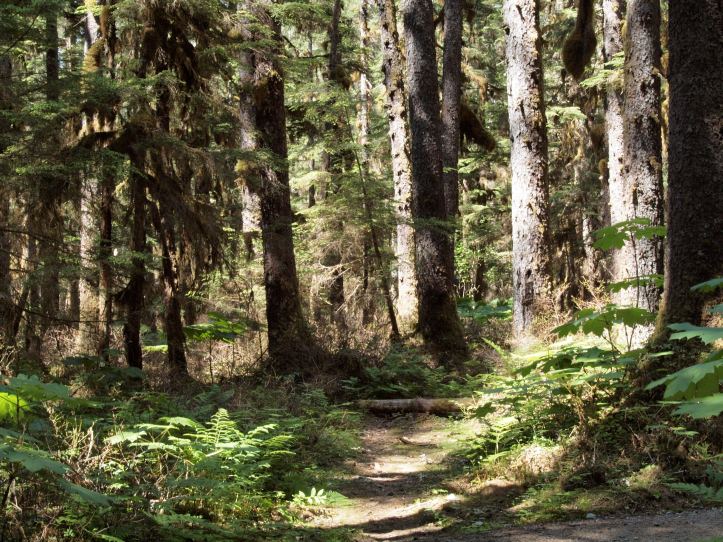
(Inside the Tongass National Forest.)
https://www.akrainforestfest.org/
October Music and Arts Festival, Seward
The Seward Music and Arts Festival features live music and dance performances, with local Alaskan artisan, craft, and food vendors featured. The festival is an exciting conclusion to the busy summer season that appeals to local Alaskans and remaining visitors alike!
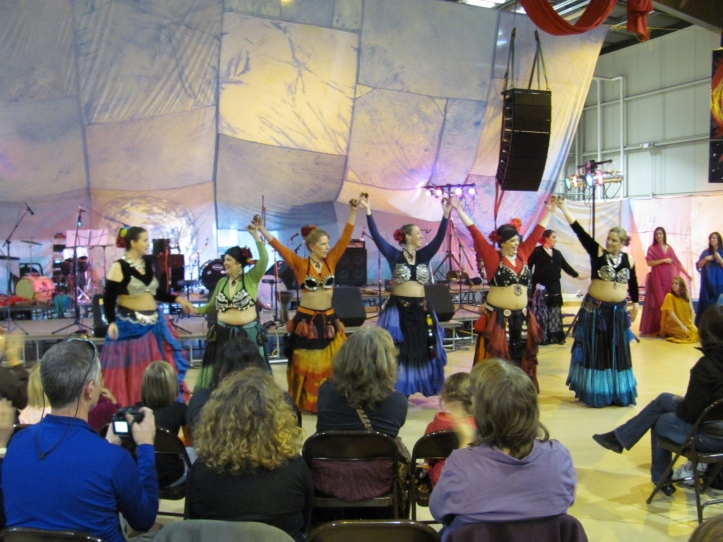
(Dance group at the Seward Festival.)
https://www.sewardfestival.com/
November Alaska Bald Eagle Festival, Haines
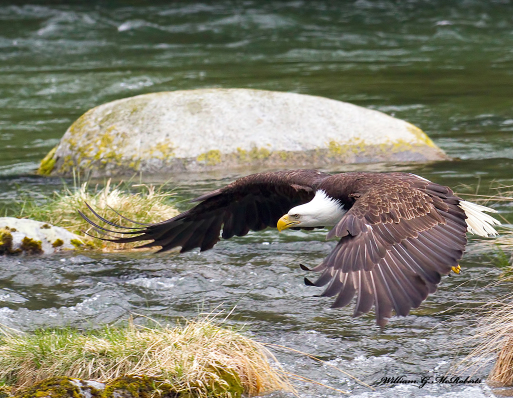
Haines, Alaska is known as the Valley of the Eagles for a good reason- the largest concentration of bald eagles in the United States happens right here in Chilkat Valley each November! A late run of chum and Coho salmon that occurs each November attracts between two and four thousand bald eagles each year- the Alaska Bald Eagle Festival is your chance to come see them.
https://baldeagles.org/alaska-bald-eagle-festival/about/
December Colony Christmas, Palmer
Palmer puts on quite a show in December. There are many events, including several craft fairs, a gingerbread house contest, ice carvings, sleigh rides, reindeer, a big parade and of course the SMOOSH RACE! What’s a Smoosh Race, you ask? Well, teams of 4 people attach their shoes to two 8-foot 2x4s and race 25 yards down and back (50 yards total) in the snow. It sounds easy, but people start falling and wood and bodies are everywhere!
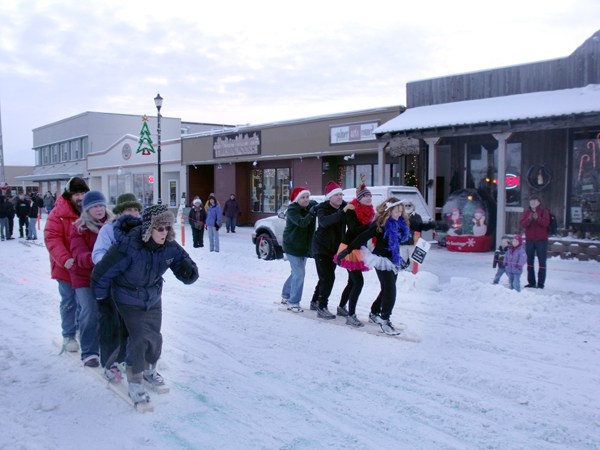
(The 2016 Smoosh race in Palmer!)
#10. Is marijuana legal in Alaska?
Yeah, I saved the stupid question for last, but I have been asked about this, so I’ll answer it here. Yes, you can buy marijuana for your personal use. There are stores all over Alaska that sell legal weed: they call them “dispensaries”, and they’ll be happy to answer any questions you may have. But (and here’s the catch for tourists): you cannot consume marijuana in ANY public place. You can’t smoke it on the street, or in a bar, or in a hotel room. You can’t bring it back onto your cruise ship or your flight home (since both of those are under federal law). You can’t consume it on any federal land (national parks, etc.) You can’t take it into Canada.
The problem for tourists, obviously is: where CAN tourists consume it? No one seems to have found a reliable answer to that question. Frankly, though, if this is why you’re going to Alaska, you’re probably wasting your time (yeah, pun intended…..)
I hope this information has been helpful (and useful) to you, as you plan your trip to Alaska. Maybe I’ll see you there sometime!

So informative and helpful! Especially nice was the section describing great souvenirs and gifts to bring home 🙂 I’ve always wanted to go and I’m going to one day!
Thanks for the nice comment! Glad you liked it. I hope you can get to Alaska someday! (Love your user
name btw)
Thank you! 🙂 and I’m determined to make it happen!